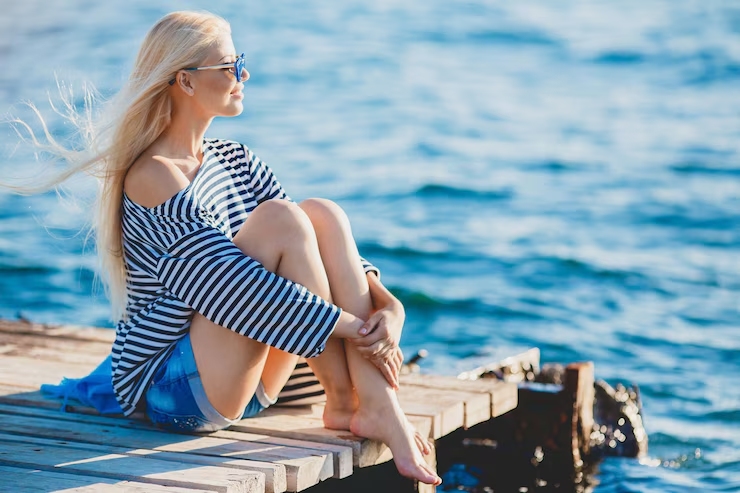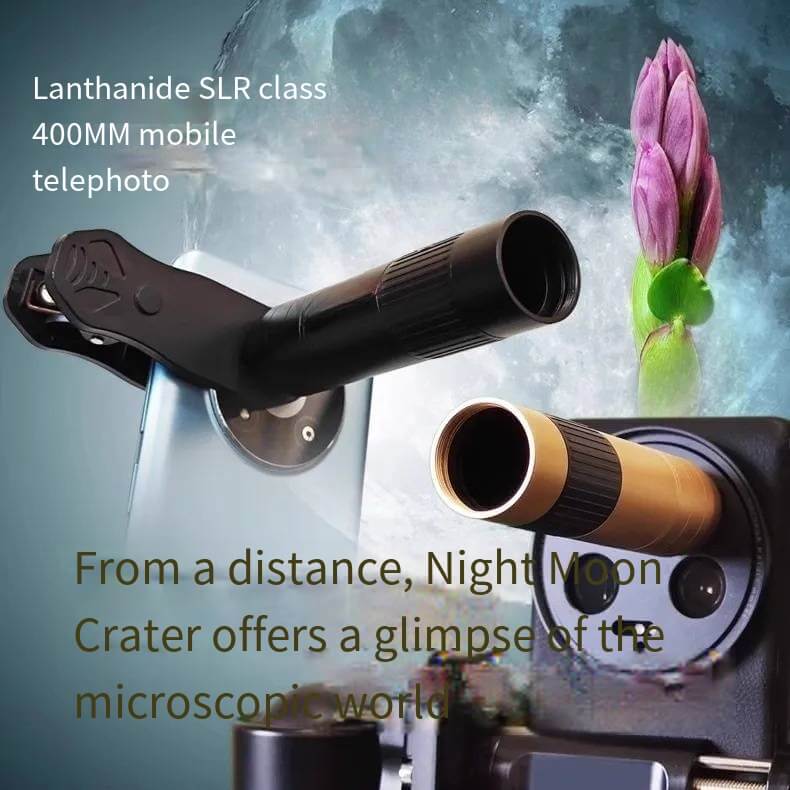
Request


Want cool seaside photos that look like movie scenes? Long lenses make coastal shots pop with awesome wave close-ups and neat perspective tricks. Plus, Hemusun’s gear gives both newbies and pros a big boost by the shore. Let’s dive into how to make your beach photos shine!
Long lenses help you zoom in on faraway stuff at the beach. Here’s why they’re great for coastal shots.
Seaside photography means snapping big landscapes or far-off things. Long lenses are super helpful because they zoom in on distant details without messing up picture quality. They’re perfect for picking out stuff like lighthouses, boats, or seabirds against the huge ocean. For example, you can zoom in on a boat way out at sea. An anti-shake lens, like the Anti-Shake Cell Phone Lens / Monocular 2-in-1 Lens-12x33, has a built-in system to stop blurry photos from shaky hands. This is awesome for steady shots, even when it’s windy by the coast. It’s especially great for long zooms or when it’s getting dark.
Long lenses bring far things closer. Let’s see how they catch tiny details at the beach.
Long lenses are great at making faraway things look close. They let you focus on cool details that wide shots might miss. For instance, you can see the texture of waves crashing, a seagull’s feathers, or the rough edges of a far-off cliff. With neat tech like jitter elimination and big zoom, long lenses give super clear and steady pictures for seaside photography. The 822 telescope mixes macro and telephoto powers. It lets you shoot as close as 60cm and still get sharp, 4K-like quality for distant stuff. This makes your beach photos look amazing, whether you’re zooming in on a shell or a boat.
Good framing makes beach photos exciting. Here’s how to use long lenses to make them stand out.
Making awesome seaside photos needs good framing. With long lenses, try setting up your shot to show both size and detail. For example, put a tiny boat against big waves to make it feel dramatic. Use lines like piers or the shore to pull the viewer’s eyes across the picture. This trick makes your photos feel alive, like you’re telling a story about the sea.
Long lenses squish scenes to look cool. Let’s learn how to mix near and far stuff in your shots.
Long lenses squish scenes, so near and far things look closer together. This makes it easy to mix foreground and background nicely. Add stuff like rocks or driftwood up front to give your seascapes depth. Change your angle or how far you stand to make fun compositions. This keeps the focus on your main subject, like a lighthouse, while showing where you are, like the beach. It’s a simple way to make your photos pop.

Beach lighting can be tricky. Here’s how to set your camera for great shots.
Coastal lighting changes a lot because of water reflections and shifting weather. Start with a middle aperture, like f/8, to keep your whole shot sharp. Use a quick shutter speed to freeze moving stuff, like waves or birds flying. Keep ISO low to avoid grainy photos, but bump it up a bit if it gets dark. For example, if the sun’s setting, a higher ISO helps you still get clear shots. These settings help you handle the beach’s wild light.
Water can make shiny glare. Here’s how to fix it for better photos.
Water reflections can cause glare that messes up your pictures. A polarizing filter cuts down those reflections and makes colors pop. Plus, it boosts contrast, so your photos look vivid. Also, try shooting during golden hours—early morning or late afternoon. The light is softer then, with less harsh shine. This makes your seaside shots look warm and pretty, like a movie scene.
Beach weather switches fast. Here’s how to adjust for awesome photos.
Weather by the sea changes quick, affecting light and what you can see. Cloudy skies give soft light, perfect for showing textures in sand or water. Clear skies bring bright colors at sunrise or sunset. Always be ready to tweak your camera settings fast. For example, if clouds roll in, adjust your ISO to keep your shots bright. This helps you catch the beach’s beauty no matter the weather.
The beach can be tough on gear. Here’s how to keep your camera safe.
Seaside spots are rough on cameras because of sand, salty air, and wet conditions. Get weather-sealed gear or use protective covers for your camera and lens. Clean your stuff after every shoot with microfiber cloths made for cameras. This keeps sand and salt from scratching your lens. For example, after shooting waves, wipe your gear to keep it safe. Hemusun’s Anti-Shake Cell Phone Lens / Monocular 2-in-1 Lens-12x33 has jitter elimination tech, great for handheld shots in tough beach conditions. Also, their Cell Phone Telephoto/Macro/Monocular 3-in-1 7x18 uses special ED glass for sharp, clear photos, even by the salty shore.
Long lenses make beach scenes dramatic. Here’s how they add depth to your photos.
Long lenses are awesome for adding drama to seaside photography. They squish perspective, so faraway things look closer together. This boosts the size and wow factor of a scene. For example, when shooting a lighthouse with waves behind it, a long lens makes the lighthouse look tall while keeping the water’s texture. This trick turns simple shots into exciting stories. It’s like making a movie with your camera, pulling viewers into the beach’s magic.
Long lenses focus on one thing to make photos look like movies. Let’s see how.
Long lenses are great at picking out one subject. They blur the background, making your main focus stand out. This shallow depth of field highlights stuff like a person by the shore or tiny details, like seashells or footprints in the sand. It’s perfect for portraits or close-ups. The cinematic look adds feeling to your photos. For example, golden light on water at sunset or shadows on cliffs look super cool with long lenses. They make your shots pull people in.

Hemusun makes awesome gear you can trust. Here’s why their lenses are top-notch.
Hemusun is a big name in optics because they make solid products for all kinds of photography. They work hard to create cool designs with careful building. Every lens gets checked to make sure it’s great. For example, the Anti-Shake Cell Phone Lens / Monocular 2-in-1 Lens-12x33 has jitter elimination tech. It’s perfect for handheld shots by the sea, keeping photos sharp even if your hands shake. Their special coatings and careful crafting mean you get clear, bright shots every time.
Hemusun has gear for everyone. Let’s check out how they help newbies and pros.
Hemusun makes stuff for both beginners and expert photographers. For newbies wanting better phone photos, the Cell Phone Telephoto/Monocular 2-in-1 8x22 gives sharp, bright pictures. It’s small and easy to carry, so you can take it anywhere on the beach. For pros needing special tools, the Cell Phone Telephoto/Macro/Monocular 3-in-1 7x18 mixes macro and telephoto powers. It uses ED glass to cut color blur and give clear, vivid photos. Whether you’re just starting or a pro, Hemusun’s gear fits your needs.
Long lenses are key for making seaside photos tell cool stories. They add depth, drama, and focus to your shots. Whether you’re a newbie exploring the beach or a pro snapping cinematic scenes, Hemusun’s awesome lenses, like the Cell Phone Telephoto/Macro/Monocular 3-in-1 7x18, lift your photography game. Get out there, try these tips, and make your coastal shots shine like a movie!
Q1: What Focal Length is Ideal for Seaside Photography?
A focal length from 70mm to 300mm is great for beach shots. It lets you snap big landscapes or zoom in on details without changing lenses a lot.
Q2: Can Smartphone Lenses Compete with Traditional Camera Lenses?
Yes! Smartphone lenses like Hemusun’s Cell Phone Telephoto/Macro/Monocular 3-in-1 7x18 work almost as good as regular camera lenses. They’re easy to carry and simple to use for phone photographers.
Q3: What Weather Conditions Are Best for Seaside Photography?
Cloudy skies give soft light, great for sand or water textures. Golden hours—sunrise or sunset—bring warm colors and cool lighting. Check the weather before you go to get the best shots.